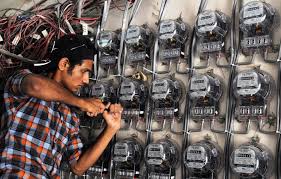New Delhi June 10 2022: An oversupply of naphtha at a time of poor demand has squeezed the product’s Asian margins to their weakest levels since the 2008 global financial crisis, traders and analysts said.
As Asian refiners boost output of more lucrative products – gasoline and diesel – to overcome global shortages, they are pumping out more naphtha, which is used in many consumer goods, especially plastics.
Meanwhile, demand from Chinese manufacturers remains low as their production recovers from heavily suppressed levels of April and May, when much of the country was under severe COVID-19 restrictions.
China is the world’s largest petrochemical consumer.
Its economic slowdown has hurt margins of cracker operators, so some in Asia and Europe have cut production – and their demand for naphtha – by extending maintenance shutdowns.
In any case, many are temporarily replacing naphtha with liquefied petroleum gas, because, as usual, its price has become relatively competitive with the approach of the northern-hemisphere summer.
“Margins weakened after polymer consumption in China dropped due to the COVID-19 lockdown,” said KY Lin, spokesman of Formosa Petrochemical Corp (6505.TW), a key fuel exporter in Asia and also the region’s largest naphtha importer.
Several naphtha crackers had cut runs to as low as 80% because of poor margins, he added.
Asian naphtha margins traded at a steep discount of $84.23 per tonne to Brent crude on Thursday, the greatest discount since November 2008, according to data on Refinitiv Eikon. Margins have shed more than 201% since the beginning of May, when they were positive.
In Northeast Asia, strong naphtha supply is coming not only from the region’s own refiners. Shipments arriving from the Middle East and India also pushing down the price, Formosa’s Lin said.
Asia received 3.5 million to 3.6 million tonnes of naphtha from the Middle East in May, the most so far in 2022 and 28% more than a year earlier, according to Refinitiv Oil research data.
Naphtha exports from India in May were 570,000 tonnes, up 20% on a year before.
A South Korea-based naphtha trader said most refiners in the region had ramped up output to almost 100% due to strength in gasoline and gasoil cracks. Refineries typically have 10-15% of their output as naphtha, versus 30% for top-earner diesel.
Excess naphtha usually goes into the pool of fuels used in gasoline blending. But only so much can be used in that way, because it has low octane content and must be supplemented with expensive gasoline blendstocks, analysts at energy consultancy FGE said in a note.










